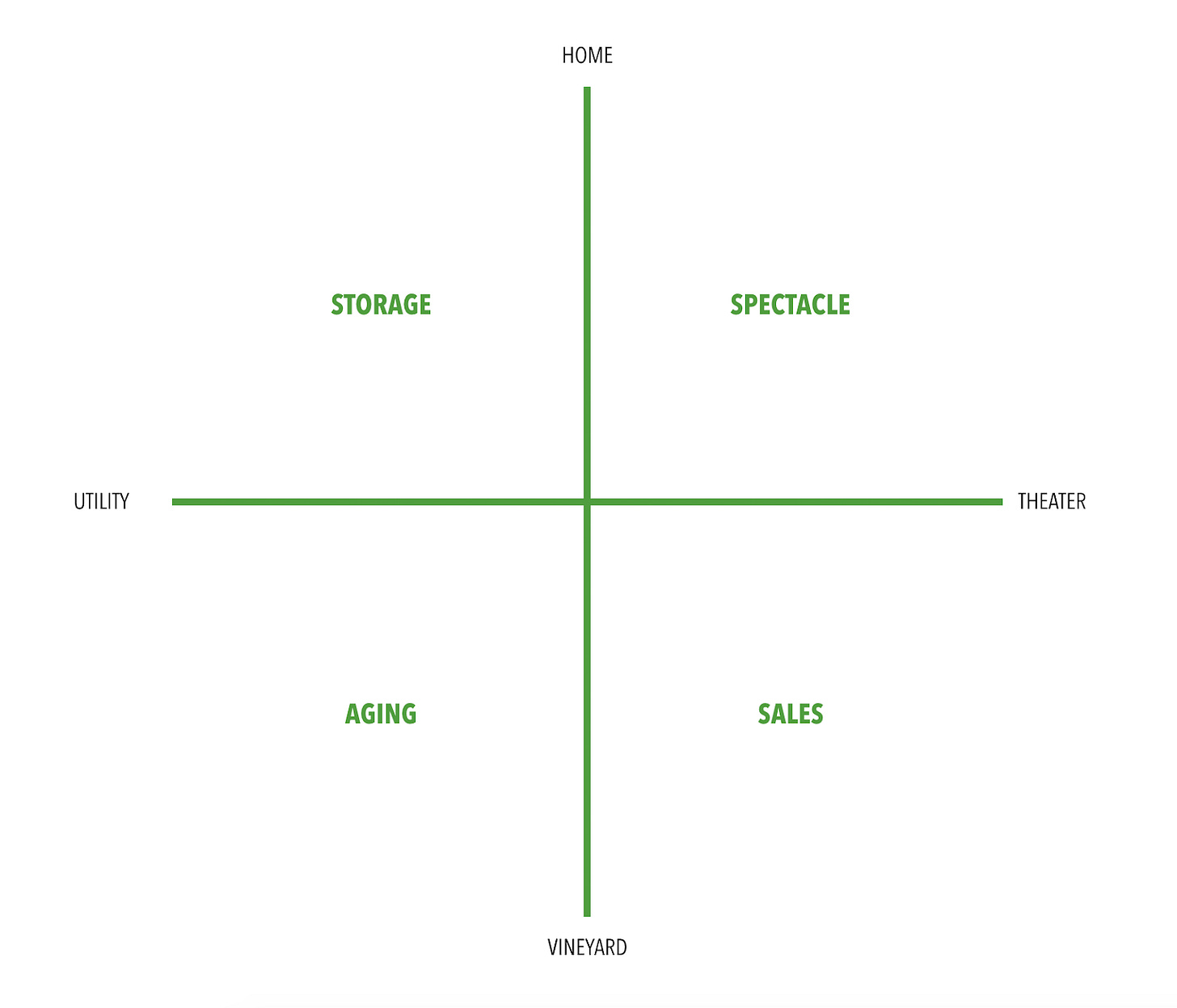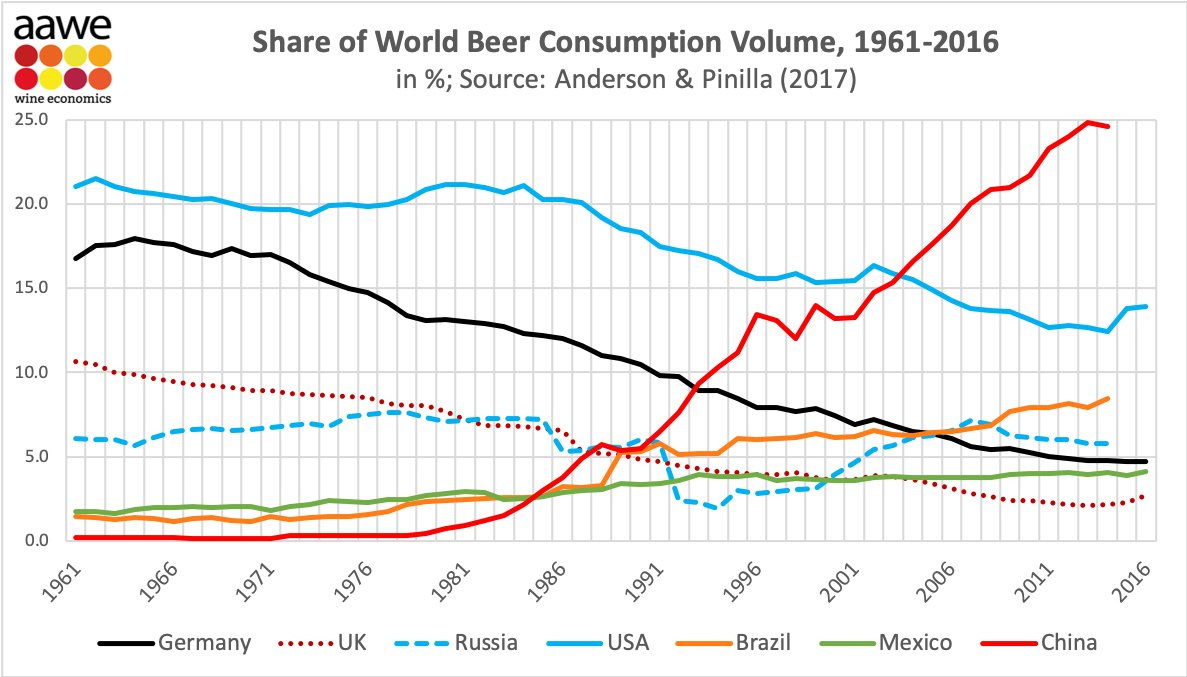Why is this interesting? - Wine Cave Edition
On dining, money, and the various spaces that exist to age wine
Felix Salmon (FMS) joins us for a fourth WITI today. He previously wrote about the Sackler family, expensive art, and pretzels. You can find him regularly over at Axios. And sign up for his excellent weekly business and finance email Axios Edge. - Noah (NRB)
Felix here. The editor-in-chief of Mother Jones magazine got ratioed on Thursday for making this observation:

The context, while also trying to walk the tightrope of the WITI no domestic politics rule, was a Pete Buttigieg fundraiser in a Napa wine cave that was viewed as being elitist.
Why is that interesting?
Jeffery is right: Wine caves are ordinary agricultural phenomena, but they’re also avatars of elitism. There are four kinds of wine cave, which (since this is a Noah Brier joint) we can put into a 2x2 matrix:

Vineyard/Utility (Aging) is the kind of wine cave that Jeffery is talking about. Wine needs to age, and it needs to age at a constant temperature. If you just put it in a barn, that would be dreadful: It would be hot during the day and cold at night, not to mention hot during the summer and cold during the winter. So for millennia, winemakers have aged their wine underground, where temperatures stay constant throughout the day and year. When they need to check on their wine, they enter their wine cave and take a sip. They might occasionally show visitors around, too, and let them try what’s aging in various barrels.
Home/Utility (Storage) is less obviously necessary. Once the wine has been bottled and sold to a customer, that customer’s main job is to drink it. All you need for that is a wine glass and a corkscrew. Still, it’s always nice to have some extra wine on hand, and sometimes you’ll buy wine that will be even better in a few years. Or maybe you’re just saving it for a special occasion. In that case, you’ll want to store it somewhere.
That’s where personal wine caves come in. They can be a small under-the-counter wine fridge, a small side room in a basement, or a huge subterranean complex, but their primary purpose is always the same: To make sure that the wine doesn’t vary in temperature too much over time. (It’s worth noting that the best temperature for storing wine is not always the best temperature for drinking wine, but it’s nearly always fine.)
Vineyard/Theater (Sales) is a gimmick. There’s often something quite romantic about a vineyard’s wine cave, and so the winemakers will sometimes turn their storage area into an event space and serve meals there, among the barrels. It can feel a bit stilted and artificial since most people don’t actually want to eat a meal in 55-degree temperatures. Still, the kind of people who might be willing to spend thousands of dollars on wine are probably used to eating in warm rooms with windows, so why not give them something memorable?
Often the “wine caves” where meals are served aren’t the actual places where the wine is aged, but are rather specially-constructed rooms which can be set to their own temperature and placed next to a purpose-built kitchen. It’s all highly theatrical, but still, there’s nothing wrong with a bit of theater.
Home/Theater (Spectacle) is the kind of place you hold a fundraiser. When you become Very Rich, you can have multiple dining rooms in a single house—and that house will probably have some kind of extensive wine storage. It doesn’t take much imagination, at that point, to start building a dining room into the wine storage. The reason is, again, mostly theatrical: Maybe you start your evening with cocktails in the sitting room, then have a nice three-course meal in the dining room, and finish with digestifs in the wine tasting room.
At some point, your dining table could end up seating 35 people and being illuminated by a crystal chandelier built into a tree’s roots, de gustibus non est disputandum. But at that point, you are no longer anywhere near the world of winemakers carefully aging their wine in a temperature-controlled setting. (FMS)
Chart of the Day:
Are beer caves a thing? Chinese beer consumption via, appropriately, Felix. (NRB)

Quick Links:
Quanta profile/interview of Jessica Flack, who runs the Collective Computation (C4) group at the Santa Fe Institute (NRB)
Desperate Beijing motorists marrying people just so they can secure a license plate for their car (via RPB)
Thanks for reading,
Noah (NRB) & Colin (CJN)
PS - Noah here. I’ve started a new company and we are looking for a sr. backend engineer to join the team. If you are one of those or know anyone great, please share. Dinner’s on me at a restaurant of your choice if you help us find someone.
Why is this interesting? is a daily email from Noah Brier & Colin Nagy (and friends!) about interesting things. If you’ve enjoyed this edition, please consider forwarding it to a friend. If you’re reading it for the first time, consider subscribing (it’s free!).


